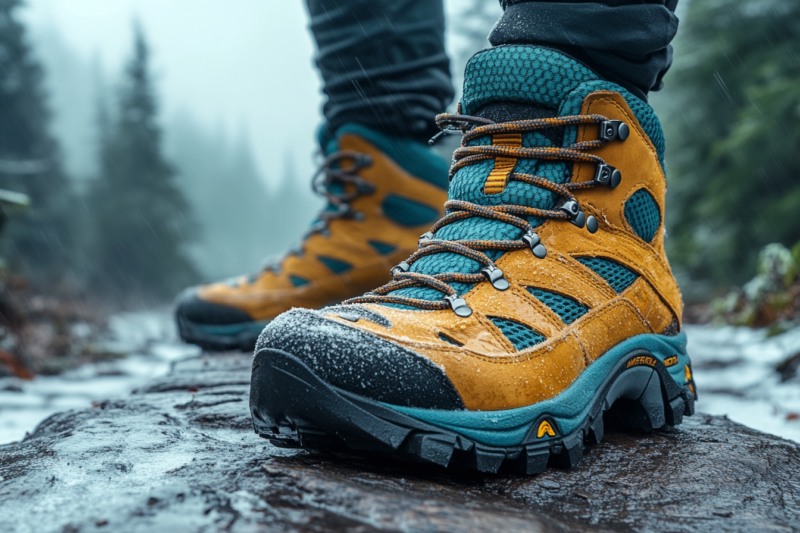Winter hiking offers breathtaking landscapes and a unique challenge for outdoor enthusiasts. However, hiking in cold, snowy, and icy conditions requires specialized skills and knowledge to stay safe and comfortable. From proper layering to navigation techniques, winter hiking demands preparation and awareness. In this guide, we’ll explore the essential winter hiking skills that every adventurer should master.
1. Master the Art of Layering
Proper clothing is crucial for regulating body temperature and preventing hypothermia. Follow the three-layer system:
- Base Layer: Moisture-wicking materials like merino wool or synthetic fabrics to keep sweat off your skin.
- Insulating Layer: A fleece or down jacket to retain body heat.
- Outer Shell: A waterproof and windproof jacket to protect against snow and wind chill.
Additional Tips:
- Avoid cotton as it retains moisture and can lead to rapid cooling.
- Use insulated, waterproof gloves and a warm hat to prevent heat loss.
- Wear gaiters and waterproof pants to keep snow out of your boots.
2. Learn Proper Footwear and Traction Techniques
Winter trails can be icy, snowy, or a mix of both. Choosing the right footwear and traction devices is essential:
- Insulated, Waterproof Hiking Boots: Keep your feet dry and warm.
- Microspikes: Provide grip on icy trails.
- Crampons: Necessary for steep and icy terrain.
- Snowshoes: Distribute weight to prevent post-holing in deep snow.
3. Navigation in Winter Conditions
Snow-covered landscapes can obscure trail markers and lead to disorientation. Key navigation strategies include:
- Carry a Map and Compass: Essential backup even if you have a GPS device.
- Use a GPS App or Device: Apps like Gaia GPS or AllTrails provide offline maps.
- Look for Trail Markers: Identify landmarks and use them to stay on course.
- Follow Avalanche Reports: Check local avalanche conditions before heading out.
4. Avalanche Awareness and Safety
If hiking in mountainous terrain, understanding avalanche safety is critical:
- Check Avalanche Forecasts: Use resources like Avalanche.org or regional avalanche centers.
- Know the Signs of Avalanche Terrain: Steep slopes, recent snow accumulation, and hollow-sounding snow.
- Carry Avalanche Gear: Avalanche beacon, probe, and shovel.
- Take an Avalanche Safety Course: Learn how to assess conditions and rescue techniques.
5. Hydration and Nutrition Strategies
Cold weather can suppress thirst, but hydration remains crucial:
- Use an Insulated Water Bottle: Prevents freezing.
- Bring High-Calorie Snacks: Energy bars, nuts, and dried fruits provide sustained energy.
- Eat Regularly: Keep your metabolism active to maintain warmth.
6. Managing Cold-Weather Risks
Hypothermia and frostbite are real dangers in winter hiking. Know how to prevent and treat them:
- Hypothermia Prevention: Stay dry, keep moving, and layer appropriately.
- Frostbite Prevention: Cover exposed skin, wear insulated gloves, and keep extremities warm.
- Emergency Shelter: Always carry an emergency bivy or space blanket in case you get stranded.
7. Winter Hiking Etiquette and Leave No Trace Principles
Respect nature and fellow hikers:
- Stay on Marked Trails: Avoid damaging fragile winter ecosystems.
- Pack Out Everything: Even biodegradable waste takes longer to decompose in cold conditions.
- Give Right of Way: Yield to uphill hikers and be mindful of snowshoers and skiers.
8. Emergency Preparedness for Winter Hiking
Unpredictable weather and remote locations make winter hiking potentially dangerous. Prepare for emergencies:
- Pack a First Aid Kit: Include supplies specific to cold-weather injuries.
- Carry a Headlamp with Extra Batteries: Short daylight hours mean you may hike in darkness.
- Know Basic Survival Skills: Learn how to build an emergency shelter and start a fire in the snow.
- Tell Someone Your Plan: Leave a detailed itinerary with a friend or family member before heading out.
Conquer the Cold, Embrace the Adventure
Winter hiking is an incredible way to experience the outdoors, but it requires careful preparation and skill development. By mastering layering techniques, using the right gear, understanding avalanche safety, and staying properly nourished, you can confidently enjoy the beauty of winter trails.
Before your next adventure, ensure you’re equipped with the right knowledge and gear for a safe and unforgettable winter hiking experience.




